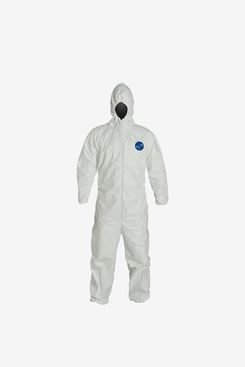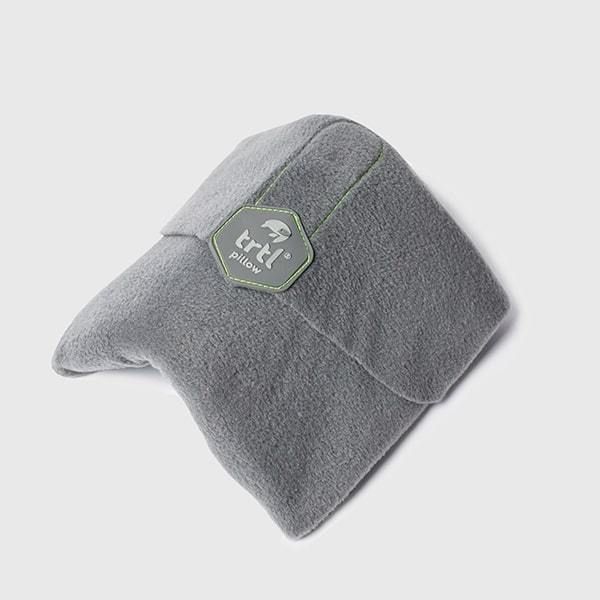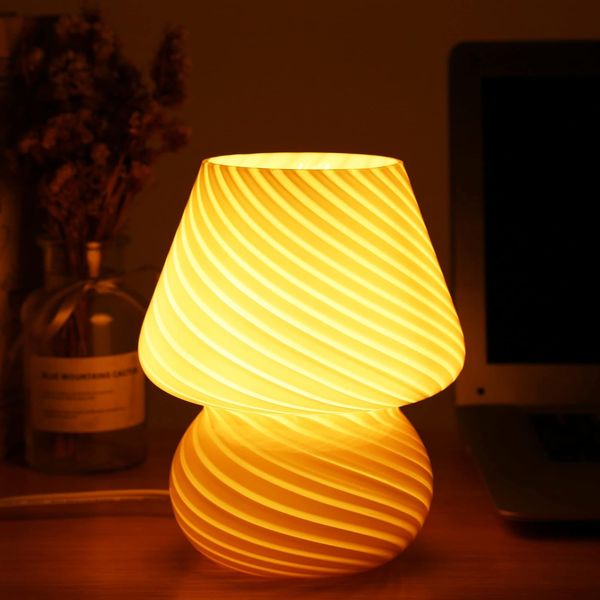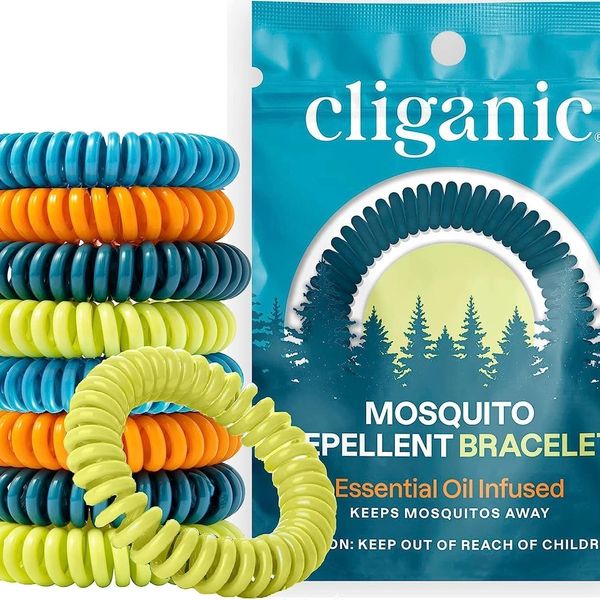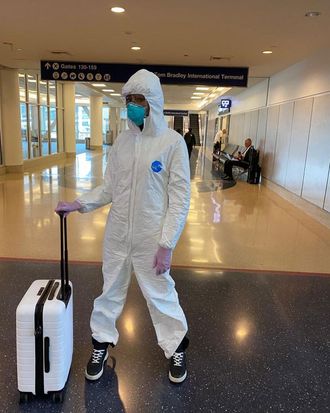
Back in March, when coronavirus cases were just beginning to pop up in the U.S., supermodel Naomi Campbell chose to don a hazmat suit on a flight from Los Angeles to New York — and documented it on her Instagram and in a video on her Being Naomi YouTube channel. In the video, she reveals she’s been wearing a face mask while flying since the ’90s and extensively cleaning her seat (as seen in this 2019 video) for 17 years. Also, she says, the hazmat suit was a tip from Linda Evangelista. As she concludes upon arriving in New York, “I think we must take every precaution that makes us protected and comfortable.”
While Campbell may have been prescient about mask-wearing, which wasn’t yet recommended by the CDC at the time of her flight, we wondered if the full hazmat suit actually does anything to protect you from COVID. And we decided to do some investigating.
The first step was to learn more about Campbell’s suit. Her team was unable to confirm the exact model, but based on photos and videos, it appears to be from the DuPont Tyvek 400 series — specifically the TY127SWH with its hood, zip-up front, and octagonal logo on the left chest. (A DuPont representative confirmed that this is the correct suit.) Interestingly, her YouTube video shows a screenshot of the Amazon product page for the Tyvek TY122S, which looks like it has a different logo from the one on the suit she’s pictured wearing. It also has attached booties, which hers does not. And while Campbell told The Wall Street Journal that she bought the suits on subscription, that tip ended up being a dead end: If you search for Tyvek suits with the “subscribe and save” option on Amazon, the only one that comes up is a 25-pack of the TY127SWH that’s available only to frontline workers.
According to the Tyvek website, suits in this series meet guidelines for personal protective equipment that shields the wearer from “particulates and light liquid splash.” During the COVID crisis, DuPont has provided more than 100 million Tyvek garments to frontline workers. These types of suits are worn by health-care workers in hospitals, as well as those working at drive-by testing sites to protect themselves from errant fluids, but do they serve any use for the rest of us when it comes to COVID? “Wearing a hazmat suit at the airport and while flying is going too far and quite honestly unnecessary, as it will cause unnecessary concern at already a tumultuous time to others around them,” says Ravina Kullar, an infectious-disease expert and epidemiologist in Los Angeles and a spokesperson for the Infectious Diseases Society of America. As Kullar explains, COVID is a respiratory virus spread through droplets in the air, which means that “fomites [surfaces] do not play a huge part in transmission.”
Infectious-disease doctor Peter Katona of the David Geffen School of Medicine at UCLA agrees. “It’s the mask, distancing, and keeping away from crowds that actually affects respiratory transmission,” he says. “Having a suit on to prevent you from being contaminated by a viral particle is almost of no concern.” Instead, both doctors recommend wearing a well-fitting, two-layer face mask that covers your nose and mouth, practicing good hand hygiene, and keeping your distance from others. If you want to take that one step further, you can add goggles or a face shield, Kullar says, but there’s no need to cover the rest of your body.
Here’s Naomi’s suit, in case you want to give it a try anyway.
The Strategist is designed to surface the most useful, expert recommendations for things to buy across the vast e-commerce landscape. Some of our latest conquests include the best acne treatments, rolling luggage, pillows for side sleepers, natural anxiety remedies, and bath towels. We update links when possible, but note that deals can expire and all prices are subject to change.
